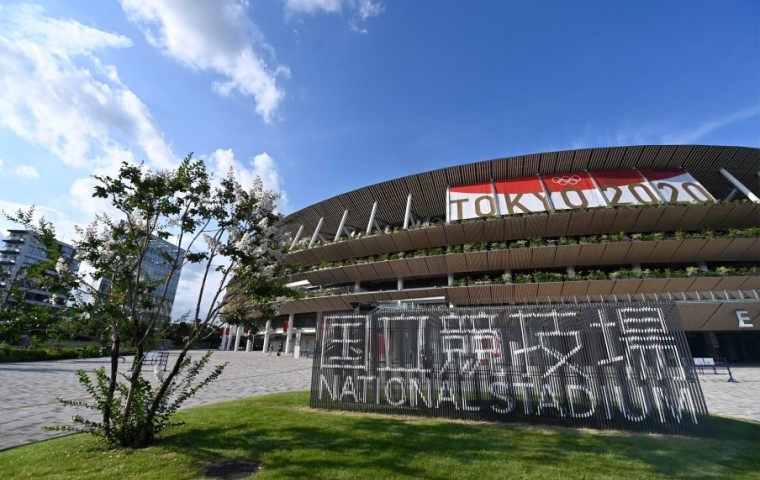Young Japanese Player Challenges the Unsung World of India’s Pro Kabaddi
Related Articles

Tetsuro Abe (23), candidate for kabaddi Japan national team, will play in the Season 8 of India’s Pro Kabaddi League (PKL).
He is the fifth Japanese player to challenge the PKL. With the season opening in December, he plans to join his team Telugu Titans for training in October. The COVID pandemic postponed the league since the summer of 2020. Before the season’s opening, PKL asked Japan Kabaddi Association to recommend players, and they selected Abe as the rising star expected to lead the next generation.
Abe has just graduated Daito Bunka University this spring. He used to be a part-time teacher at his alma mater, Jiyunomori Gakuen Junior and Senior High School, but left his job for his challenge in India.
While at school, he did not feel confident and declined the recommendation to play in PKL. “Yet I had the urge to learn the sport in India, home of kabaddi, so I was determined to go to India after graduating, regardless of playing in the professional league. But then, the COVID pandemic came, and I wondered what to do. It was a hard decision, but I made up my mind to go since it was a great opportunity,” and Abe took on the challenge.
Chinese Smartphone Company Signs 5-Year League Sponsorship at 4.5 Billion Yen
Kabaddi is a minor sport not included in the Olympics. But in India, where the sport originated, it is the second most popular sport after cricket.
Established in 2014, PKL was initially a short-term event. But after India’s largest TV media, Star India began airing games as the main broadcaster, PKL became popular in the country. From Season 5 in 2017, China’s smartphone manufacturer Vivo signed a five–year main sponsorship contract at three billion rupees (about 4.48 billion yen).

According to PKL’s official website, the league recorded an accumulated viewing of 328 million in the last season, rapidly growing in scale and attracting attention.
Kazuhiro Takano (36), a member of the Japan national team who played in PKL’s Seasons 2 and 4 says, “The enthusiasm in the stadium is amazing. It’s the only place where you can play kabaddi in the glamorous world of entertainment.” It is a dream stage for the players.
A feature of PKL is the team formation by auctioning players every season (some players can be retained from the previous season). The highest auction price this year was at about 24.66 million yen for Pardeep Narwal, a local player known as a superb raider.
While Abe’s Price Was Only 1.5 Million Yen…
While pro kabaddi players earn less than major sports players, the pay is quite lucrative when you consider the season lasts only two and a half months. The auction price of the top players has increased tenfold in the seven years since the league’s inception. Abe’s auction price was one million rupees (about 1.5 million yen) which is the base rate for Category C for overseas players. His teammate Siddharth Sirish Desai (India) had the highest bidding last season, at the 20-million-yen level.
Abe, who often watches PKL games on video, says, “He is a tall raider (offense), and a popular player. Even if he receives a perfectly timed tackle, he can return by dragging the opponent with his physical strength. I would love to get hold of him (in defense). I’m thrilled I will play together with such players.”
Chanting the Mantra “Kabaddi, Kabaddi…”
Abe began playing kabaddi in his first year of senior high school. He took interest because his older sister was a kabaddi team assistant at the Jiyunomori Gakuen Senior High School.
In his junior year in 2018, he took part in the Asian Games as a member of the Japan national team. In kabaddi, while chanting the mantra “kabaddi, kabaddi……,” the raider enters the opponent’s pitch where multiple antis await. The raider touches the opponents and returns to his/her pitch to score. Since the antis can score if they prevent the raider from returning, the game involves intense physical contact. Abe plays mostly as an anti. He captures the opposing team’s raider that enters his side of the pitch to touch.
Commenting on Abe, team Japan’s head coach Terukazu Nitta says, “The overwhelming difference from previous Japanese players is his ankle hold skill. Just being off by the length of a foot can let the opponent get away with a touch, and that’s the hard part. But if you can hold the ankle and lift the opponent, you can surely stop their move. His response is really quick with this skill. He also has a broad vision that can see the other side and his surroundings, so he is unlike anyone we had before.”
It would be interesting to see how well Japan’s skillful anti can play in India, home to kabaddi.
But hard knocks will await Abe as an overseas player. Of the Japanese players who challenged the PKL in the past, four out of five had the chance to play in the games, but none became starting players.
Overseas Players Not Considered as Contributing Force
Takano, who had played two PKL seasons, experienced some bitter feelings in India. “When I go to practice, they tell me to watch beside the pitch, or do strength training with young players, and won’t let me join the actual game. Although teams invite overseas players according to the league rules, they really don’t see you as a contributing force.”
Masayuki Shimokawa, the major player on the national team, expressed support for Abe, with some advice on joining the community of local players. “There is a tendency for the Indian players to group together by themselves, so Japanese players need to take action, or they won’t let you do decent practice. I believe Abe has the skills to be recognized, so he should let them know how good he is from the practice stage, and play his best.”
The raider plays by himself, but coordination is important for the antis. That also becomes a hurdle for gaining a fixed position in the team.
Can Abe secure his position within the team, instead of just being an overseas player to fill the headcount? His challenge means a lot to the kabaddi community in Japan.
Bearing expectations as a key player in the next-generation Japan national team, Abe said, “The Asian Games (2022) will be held next year, so I want to reap something out of it, become more matured, and come back to act as a stimulus for the national team.”
Inspired by Manga “Burning Kabaddi”
In recent years, as the manga “Burning Kabaddi” became popular in Japan, new players and teams are appearing mainly among students. Meanwhile, there is little progress in improving the environment for non-student players to continue the sport, and there is no denying this may end as a passing boom.
Abe has been coaching the kabaddi team at his alma mater, Jiyunomori Gakuen Senior High School, as a part-time teacher. He says, “In Japan, you don’t have the environment to play matches regularly, and it’s just practice. I believe that’s one reason the students quit playing. The high school players these days have unbelievably higher skills than when I was their age, but most stop playing when they graduate. I’m happy I can show them one form of a challenge.”
Abe intends to prove to himself that, like the European league that Japanese soccer players aim for, there is the professional league in India for kabaddi players. And he will bring back the inspiration he gained on the highest stage for the national team. The blueprint is to win a medal at the 2026 Asian Games in Nagoya, Aichi Prefecture, which is the target of the Japanese kabaddi community, and to promote the sport in Japan.
His challenge for the PKL has significant value in boosting kabaddi in Japan.
Abe says, “When I was in high school, Shimokawa-san and Takano-san coached us. They inspired us in various ways—beating us up completely and showing us their awesome matches. Now, it’s my turn to do the same. I feel rather proud and happy to do so.”
Quit Part-Time Teacher to Head for India
Abe will leave his part-time teaching job to go to India. In the future, he hopes to become a teacher. Meanwhile, he intends to prioritize playing kabaddi until the 2026 Asia Games. One reason for this is that he gets to play in the big game in his prime before turning 30. He also sees meaning in challenging until he feels fully done.
“If I could make it in India, I’d like to try as far as I can go, next season and onward. In the end, I want to become a teacher. But unless I go all the way with kabaddi, I feel I won’t have the self-confidence to talk about it to my students,” says Abe.
Preferring music than sports and beating drums during his elementary and junior high school days, Abe has an unusual background, with kabaddi being the first serious sport he had taken up. He made progress by aggressively learning skills and tactics from his seniors.
Will the challenge by a young player who will lead the next generation be an activator for Japan’s kabaddi community? Amid the uncertainties of the COVID pandemic, Abe will fly to India and plunge into the world of his dreams.




